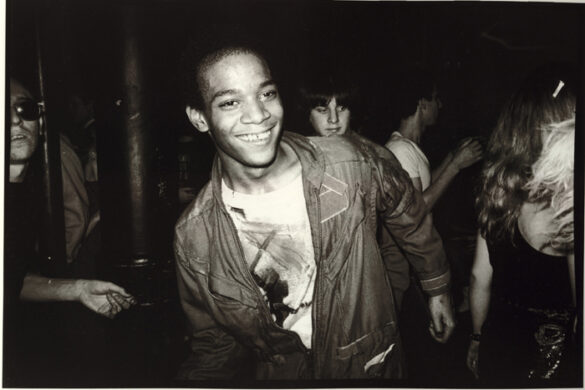It was the coolest of times, and to the fainthearted, it was the cruelest of times. Long before the plague shuttered NY City’s nightlife, and before the underground club scene shifted to Brooklyn, the city’s beat pulsated on the stages of Max’s Kansas City, CBGB, and the Mudd Club.
That driving rhythm echoed and summoned me from a distant Springfield, Missouri. With $350 in my pocket, I followed the city’s siren call and hitched a ride to New York with a group of musicians who were friends of friends.
During that summer of 1980, the Midwest had an unprecedented heatwave. Still, I stowed away in the band’s rickety and windowless panel van. We were all packed in the seatless back of the vehicle on a bare metal floor, sandwiched between amplifiers and guitars. Worse still, a faulty radiator required blasting the heater to prevent the engine from boiling over. It was so hot that I thought the graffiti covering the van’s exterior would melt off into technicolor puddles. Too broke to afford a hotel room, we drove a grueling 28 hours straight. The air was thick and salty. It would take days for me to wash off that travel funk.

Somewhere around 3:00 AM, we emerged out of the Holland Tunnel into the pre-Aids West Village, back then still packed with gay bathhouses. The smell of sweat, sex, and rotting garbage was everywhere. My first city view was a trans sex worker under the West Side Highway’s hazy streetlights. She was dressed in a merry widow holding up stockings that exposed her shapely thighs. In the highest heels imaginable, she was straddling the k-rail — sashaying in a seductive trance. In that instant, I knew only a place allowing such freedom could be home for me.
My new transporter-musician friends, The Marbles, helped me land in the art and music world’s epicenter. The Marbles, who held a pivotal position in the New Wave/Punk scene, secured a front-row seat within the demi-monde for me. When I saw the classic cult film “The Blank Generation,” a primer for the downtown music culture, I was thrilled to see my friends featured so prominently.
Max’s closed shortly after I arrived, but I became a regular at CBGB and the Mudd Club, where I brushed shoulders with members of The Talking Heads, Blondie, and The Heartbreakers. As an uninitiated Midwesterner, this was an unbelievable stroke of luck and the ultimate cool. I studied and appropriated their disaffected brand of style. I was becoming a New Yorker.

Basquiat at the Mudd Club
But since I arrived fashionably late to the party, the sub-culture had already hit its apex. New York was clawing its way back from bankruptcy, rents were rising, and investment bankers started collecting Soho lofts. Time passed. I went on to become a designer, hoping to translate some of my newly acquired counter-culture chic for the Midwesterners who didn’t break away.
New music venues opened, and relocated, and reopened, and shut down. The next wave of young and impressionables arrived. Unfortunately, the Marbles never realized the fame they deserved, perhaps because they were too nice and just not edgy enough for those gritty times.
Today, my old Village neighborhood is an unrecognizable landscape of NYU outposts, corner Duane Reades, and bubble tea stands.
Before, I found myself in the epoch of the endless dance party. I could never have fathomed our current era of social distancing and the personal pod.
How did we get here?
Where will the Future Punx play?
Tomorrow’s artists know this is just a moment — so they are ready and waiting until thi

